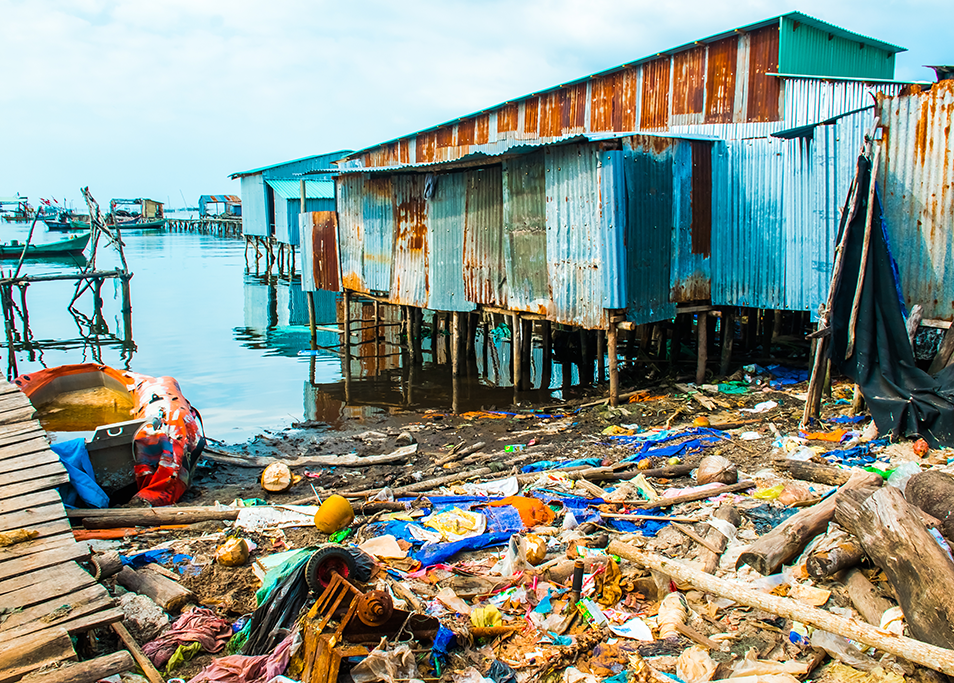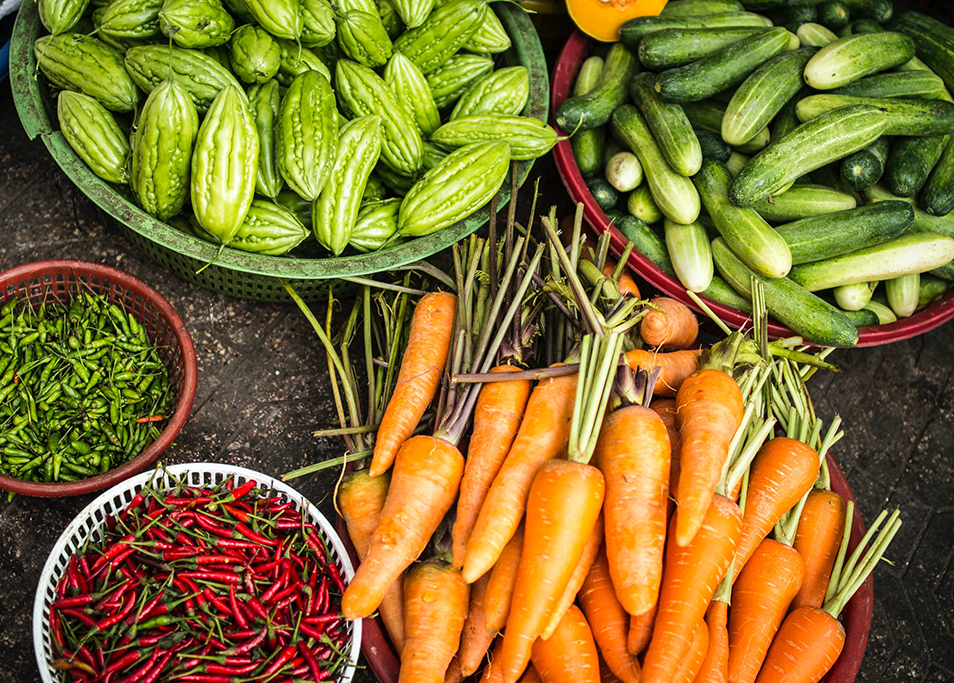
Vietnam’s environmental challenges are being tackled by the Aus4Innovation Program.
Australian and Vietnamese researchers are teaming up to tackle Vietnam’s biggest environmental challenges. Picture this. You live in Ho Chi Minh City (HCMC), one of the largest and most urbanised cities in Vietnam. It’s the middle of the year, also known as monsoon season. Rainfall is high, humidity is intense, and it is not a comfortable commute to work.
In HCMC, there is a 60 per cent chance your home may become damaged due to flooding. According to a McKinsey report, the chance of flooding events could increase by five-10 times by 2050, causing serious economic and infrastructural damage.
Flood monitoring technology in Vietnam
Researchers from Griffith University and Saigon Hi-Tech Park are using real-time flood monitoring technology to help prevent human disasters. This technology is an innovative, low-power consumption, wireless sensor network for reliably detecting flooding. It can directly improve flood prevention, management and response, helping to deliver a positive impact on local safety, business productivity and environmental protection for millions of people.
The core sensor technology allows mass production of tiny sensors with high sensitivity and low power consumption. These sensors are robust in difficult environments where monitoring water levels can do the most good. Production and performance improvements, combined with the latest IoT (Internet of Things) wireless communication technology, will enable the cost-effective and efficient deployment of flood sensor networks to at-risk communities.
This partnership will develop Vietnam’s capability to produce advanced sensors. It will also help install the technology in locations that are susceptible to flooding in HCMC. The network will provide real-time flood information and early warning for citizens via an app. The technology will also assist authorities in traffic management and control, which will help mitigate human and economic losses.

Residents in Ho Chi Minh City, Vietnam, in the middle of flooding season. Flooding is just one of Vietnam’s environmental challenges.
Maintaining quality produce from farm to market
The vegetable sector is an important source of employment for the local people, especially women, in the Son La province. With the development of supermarkets in Hanoi and other big cities, customers are now demanding high-quality agricultural products. However, the lack of a functional cool chain means farmers are losing up to 30 per cent of the goods they send to market.
Researchers at Applied Horticultural Research and Fresh Studio are developing a way to fill the current gap in the value chain. They are working with local farmers, the private sector, and government to build an innovative low-cost CoolBot controller. The controller allows conventional air-conditioning units to be used to run cool rooms. This results in a consistent temperature environment that helps to maintain quality produce.
This innovation will not only avoid waste – farmers who participate will be better off financially. It could increase much-needed job opportunities for women, who make up a high percentage of farmers.
Improving productivity for Vietnam’s agricultural sector
The agricultural industry in Vietnam faces ongoing pressures from climate and weather risk, market dynamics, and unsustainable production methods. These pressures combine to adversely impact environmental, financial and social outcomes. They cause harm to land and water resources, smallholder farmer livelihoods, and consumer confidence.
Challenges like these have become opportunities for start-up companies across the globe. They have created a need for new approaches and accelerated the growth of emerging innovative companies. Enhancing the support available to businesses in Vietnam will help ensure agriculture businesses, and millions of farmers, don’t miss out on critical innovations to drive productivity and competitiveness.

Beanstalk will work with agribusiness leaders on Vietnam’s environmental challenges faced by the agriculture sector.
In collaboration with the MBI Innovation Challenge and other local partners, Beanstalk is establishing a commercially-focused AgriTech acceleration program in Vietnam. The program targets agriculture segments in aquaculture, crops and plantations, and livestock. The accelerator will be the first of its kind, with a dedicated focus on addressing agriculture sector challenges and improving productivity.
The benefits of connecting the Vietnamese AgriTech ecosystem to the global innovation ecosystem are clear. Ultimately, the program aims to provide new financing and market access pathways to commercialise and scale emerging technologies developed in Vietnam.
Catfish by-products reduce environmental impacts
Vietnam’s Tra Catfish industry in the Mekong Delta region accounts for the production of about 1.42 million tons in recent years. This industry has an export income of more than USD 1.77 billion. It also employs more than 200,000 rural workers, with the majority being women and girls (VASEP, 2019).
Catfish by-products represent about 60-70 per cent of the fish biomass. Rapid development of the Tra Catfish fillet market has seen a need to update processing the historically perceived ‘waste by-product’ technologies and management. With market competition and tightening of environmental regulations, it has stimulated interest in the industry to make significant improvements.
Researchers at Western Sydney University and Research Institute for Aquaculture are working to reduce negative environmental impacts by improving value-added product recovery and development from fishery processing by-products.

Researchers aim to reduce the negative environmental impacts from the catfish processing industry.
Protecting mangrove aquaculture in the Mekong Delta
Another one of Vietnam’s environmental challenges is managing mangrove aquaculture systems. Mangrove aquaculture systems provide multiple products and ecosystem services. These include the support of fisheries, biodiversity, carbon sequestration, coastal protection and resilience to climate change. Mangroves are more sustainable than other forms of aquaculture. The health of the mangrove and the health and productivity of aquatic species are closely linked.
Mangrove aquaculture is heavily dependent on the influx of high quality natural tidal water. Water pollution, low oxygen concentration, and salinity changes pose risks to both aquatic species and mangrove trees. Monitoring water quality is critical for farmers’ decision making. It can inform what species to culture and when to exchange water within aquaculture ponds.

Mangrove aquaculture is heavily dependent on the influx of high quality natural tidal water.
This is especially important in the Mekong Delta, where water pollution due to upstream agricultural production, intensive aquaculture, industrial production and domestic waste is becoming more severe. By sustaining mangrove aquaculture, it supports resilient communities in the region.
To tackle this problem, researchers at The University of Queensland, in collaboration with Vietnamese partners, are developing an environmental monitoring system. This system includes a suite of mangrove-aquaculture health indicators. The technology will support stakeholders to better monitor the water quality, mangrove change and aquaculture. This will be done through the integration of wireless environmental monitoring stations at critical water points, along with real-time automated mangrove change detection using remote sensing images.
The Aus4Innovation (A4I) Program is managed by us and funded by the Department of Foreign Affairs and Trade. This program is enabling new innovations to positively impact the lives of farmers, citizens, and the environment in Vietnam.


18th September 2020 at 7:33 am
But surely the Mekong Delta remains the most polluted waterway in the planet does it not? Surely therefore the fish that
Australia imports into our fish markets from that place in Vietnam must have many toxins? People still buy it as it is so cheap, but at some risk to health if the fish include toxins. Correct? That said, growing fish in mangroves, nature’s filters, makes sense.
The largest supplier of farmed fish in the world is Norway of course, and its frozen salmon imports were recently proclaimed by the Chinese Government to have induced a small but since contained Covid-19 outbreak, in August 2020. New Zealand recently claimed it had an outbreak of covid and were investigating if the source came from frozen food. Odd!
According to Jerome Rozzini at toxicology expert in Norway, the farmed salmon there has five times more toxins that any other farmed salmon. Still we import it in large quantities into super markets in Australia and finally Australian supermarkets are selling more Tasmanian salmon as well.
Our own famed salmon in Tasmania suffers from white spots on the gills, and only expensive hand washing in fresh water seems to help with that.
The sea beds under the farming pools in Norway have layers of salmon waste up 15 metres deep that decimate the sea bed below them.
How sustainable is salmon farming considering that salmon eat twice their production weight in protein? In other words a kilo of salmon meat was produced from that fish eating two kilos of protein.
Currently fish and shell fish are facing a different problem though. Plastic tiny pellets that are ingested by humans when one eats fish. The plastic is the broken down plastic waste that is shoved into the oceans by most Third World countries, especially in the Philipines. I do not know how VIetnam gets rid of its plastic waste. The picture posted on your article looked like it ends up in the ocean. All oceans are now loaded with plastic… so the wild fish are ingesting it.
Apparently Germany has come up with a way to turn plastic waste back into a liquid. Any out there know if Australia will ever get around to importing that progress to help of dispose of plastic waste now going into landfill?
What beats me is the way A2 and other Australian milk sellers insist on containing milk in plastic as it is cheap, and it is hard to get it now in glass or carboard lined with a thin laminate. St Pauls still procuces the cartons. In the USA you can get a gallon of milk (four litres ) in cardboard, lined with a thin laminate. so it is possible not to have plastic containers for milk.
Basically with such an over population of the planet now emerging at 7.6 billion and climbing, up 5 billion since 1944, the world cannot probably sadly survive on wild fish and cleaner food. There is not enough of it to feed the billions especially in China and India which together account for 2.6 billion people.
16th September 2020 at 1:16 pm
Hooray for such initiatives that can help those literally on the ground floor (and processing) to utilise waste streams more effectively! The others are great, too!